
The transfer of the Crimean Oblast in 1954 was an administrative action of the Presidium of the Supreme Soviet of the Soviet Union which transferred the government of the Crimean Peninsula from the Russian Soviet Federative Socialist Republic to the Ukrainian SSR.
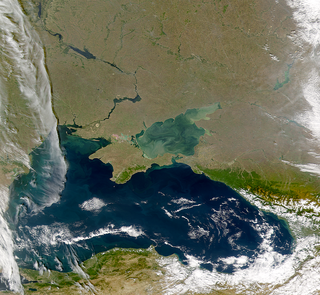
The recorded history of the Crimean Peninsula, historically known as Tauris, Taurica, and the Tauric Chersonese, begins around the 5th century BC when several Greek colonies were established along its coast. The southern coast remained Greek in culture for almost two thousand years as part of the Roman Empire, and its successor states, the Byzantine Empire, the Empire of Trebizond, and the independent Principality of Theodoro. In the 13th century, some port cities were controlled by the Venetians and by the Genovese. The Crimean interior was much less stable, enduring a long series of conquests and invasions; by the early medieval period it had been settled by Scythians (Scytho-Cimmerians), Tauri, Greeks, Romans, Goths, Huns, Bulgars, Kipchaks and Khazars. In the medieval period, it was acquired partly by Kievan Rus', but fell to the Mongol invasions as part of the Golden Horde. They were followed by the Crimean Khanate and the Ottoman Empire, which conquered the coastal areas as well, in the 15th to 18th centuries.

The State Council of Crimea is the parliament of the Republic of Crimea. It had previously been called the 'Supreme Council of Crimea but changed its name in March 2014 following a vote by the Ukrainian parliament to dissolve the Supreme Council of Crimea. The Parliament is housed in the Parliament building in the centre of Simferopol.

The Crimean Oblast was an oblast (province) of the former Russian SFSR (1945–1954) and Ukrainian SSR (1954–1991) within the Soviet Union. Its capital was the city of Simferopol.
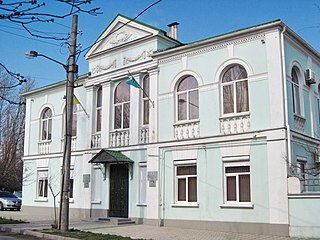
The Mejlis of the Crimean Tatar People is the single highest executive-representative body of the Crimean Tatars in period between sessions of the Qurultay of the Crimean Tatar People.
The politics of Crimea today is that of the Republic of Crimea on one hand, and that of the federal city of Sevastopol on the other, within the context of the largely unrecognised annexation of Crimea by the Russian Federation in March 2014.

The Declaration "On the Restoration of Independence of the Republic of Latvia" was adopted on 4 May 1990, by the Supreme Soviet of the Latvian SSR. The Declaration stated that, although Latvia had de facto lost its independence in 1940, when it was annexed by the Soviet Union, the country had de jure remained a sovereign country as the annexation had been unconstitutional and against the will of the people of Latvia. Therefore it resolved that the Molotov–Ribbentrop Pact and the Soviet occupation of Latvia in 1940 were illegal, and annulled the declaration on the accession of Latvia to the Soviet Union of 21 July 1940, re-instituted the Constitution of Latvia of 1922, which was thereupon partly suspended, and set a period of transition to de facto independence, which would end upon the first session of Saeima. It also ruled that during the transitional period the Constitution of the Latvian SSR and other laws would remain applicable as long as they did not contradict articles 1, 2, 3, and 6 of the Constitution of Latvia, which were reinforced by the declaration. It was provided that a committee to elaborate a new edition of the Constitution of Latvia should be created. Social, economic, cultural, and political rights were granted to citizens and residents of Latvia in accordance with international human rights. The declaration also stated that Latvia would form its relationship with the Soviet Union on the basis of the Latvian–Soviet Peace Treaty of 1920, in which the Soviet Union had recognized the independence of Latvia as inviolable "for all future time". The 4th of May is a national holiday in Latvia.

The only presidential elections were contested in the Republic of Crimea for the post of President of Crimea, at the time a republic within Ukraine. The office was created by the Verkhovna Rada of Crimea, the republic's unicameral parliament October 13, 1993. Elections were subsequently held on January 16, 1994 with the second round on January 30 since a two-round system was used to elect the President. The presidential elections in Crimea were one of the most important precedents of the Crimean crisis that laid the basis for the Ukrainian-Russian international relationship.
The constitution of the Autonomous Republic of Crimea is the basic law of the Autonomous Republic of Crimea, a republic on the Crimean peninsula as part of Ukraine. The constitution establishes the republic's status and authority within Ukraine. It granted Crimea the right to draft a budget and manage its own property. The constitution was repealed by a disputed referendum during the 2014 Crimean crisis, after which the Republic of Crimea was established as a federal subject of Russia after the annexation of the peninsula. The Ukrainian government has refused to recognize the annexation of Crimea by Russia and still recognizes the constitution as active.

The Council of Ministers of the Autonomous Republic of Crimea, briefly SovMin, was until February 27, 2014 the executive branch of government of the Autonomous Republic of Crimea, a republic within southern Ukraine. The Council of Ministers derived its authority from the Constitution and laws of Ukraine and normative acts of the Verkhovna Rada of Crimea which bring them into its competency.
A referendum is a direct vote in which an entire electorate is asked to either accept or reject a particular proposal. This article summarises referendum laws and practice in various countries.

A controversial referendum on the status of Crimea was held on March 16, 2014, by the legislature of the Autonomous Republic of Crimea and by the local government of Sevastopol. The referendum requested local populations whether they wanted to join Russia as a federal subject, or if they wanted to restore the 1992 Crimean constitution and Crimea's status as a part of Ukraine. After the events of Euromaidan, the referendum was held during a Russian military takeover of Crimea. The referendum is not internationally recognized by most countries.

Sergey Valeryevich Aksyonov is the Head and Prime Minister of the Republic of Crimea from 2014. which is an internationally disputed federal subject of Russia located on the Crimean Peninsula.
A referendum on sovereignty was held in the Crimean Oblast of the Ukrainian SSR on 20 January 1991 two months before the 1991 All-Union referendum. Voters were asked whether they wanted to re-establish the Crimean Autonomous Soviet Socialist Republic, which had been abolished in 1945. The proposal was approved by 94% of voters.
![Autonomous Republic of Crimea administrative division of Ukraine since 1992, not occupying the whole peninsula [see Q15966495 for Russian subdivision proclaimed in 2014]](https://upload.wikimedia.org/wikipedia/commons/thumb/a/aa/Flag_of_Crimea.svg/320px-Flag_of_Crimea.svg.png)
The Autonomous Republic of Crimea is, de jure, an autonomous republic of Ukraine encompassing most of Crimea, though, de facto, it was annexed by the Russian Federation in 2014.

The Crimean Peninsula was annexed from Ukraine by the Russian Federation in February–March 2014 and since then has been administered as two Russian federal subjects—the Republic of Crimea and the federal city of Sevastopol. The annexation followed a military intervention by Russia in Crimea that took place in the aftermath of the 2014 Ukrainian revolution and was part of wider unrest across southern and eastern Ukraine.

The Republic of Crimea is a federal subject of Russia that is located on the Crimean Peninsula. The capital city and largest city within the republic is Simferopol which is also the second largest city of Crimea, behind the federal city of Sevastopol. At the last census the republic had a population of 1,891,465 .
The political status of Crimea has been a subject of a territorial dispute between Ukraine and Russia. Russia annexed Crimea in 2014 following a referendum, and administers it as two federal subjects of Russia, and claimed it to be 'fully integrated' in July 2015. Ukraine and the majority of international governments continue to regard Crimea as an integral part of Ukraine.
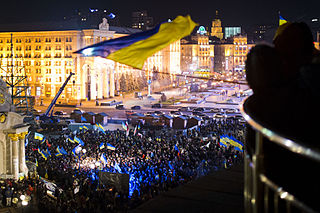
A variety of social, cultural, ethnic, and linguistic factors contributed to the sparking of unrest in eastern and southern Ukraine in the aftermath of the early 2014 revolution in Ukraine. Following Ukrainian independence from the Soviet Union in 1991, resurfacing historical and cultural divisions and a weak state structure hampered the development of a unified Ukrainian national identity. In eastern and southern Ukraine, Russification and ethnic Russian settlement during centuries of Russian rule caused the Russian language to attain primacy, even amongst ethnic Ukrainians. In Crimea, ethnic Russians have comprised the majority of the population since the deportation of the indigenous Crimean Tatars by Soviet Union leader Joseph Stalin following the Second World War. This contrasts with western and central Ukraine, which were historically ruled by a variety of powers, such as the Polish–Lithuanian Commonwealth and the Austrian Empire. In these areas, the Ukrainian ethnic, national, and linguistic identity remained intact.


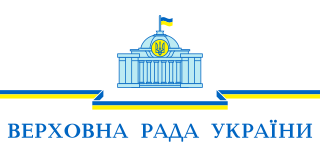

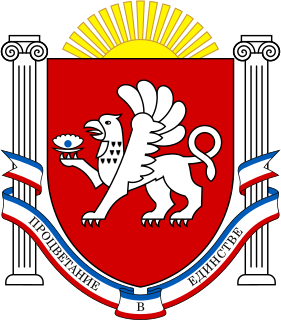









![Autonomous Republic of Crimea administrative division of Ukraine since 1992, not occupying the whole peninsula [see Q15966495 for Russian subdivision proclaimed in 2014]](https://upload.wikimedia.org/wikipedia/commons/thumb/a/aa/Flag_of_Crimea.svg/320px-Flag_of_Crimea.svg.png)


